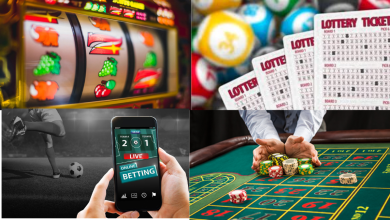How Gambling Is Portrayed in South African Media and Film

How gambling is portrayed in South African media and film reveals the country’s complex relationship with risk, money, and morality. From suspense-filled dramas to real news reports, gambling often takes centre stage in local storytelling. These portrayals shape public opinion, reflect cultural beliefs, and raise important questions about addiction and responsibility.

This article looks at how local media and entertainment frame gambling, the recurring themes, and how those narratives influence daily life in South Africa.
ALSO READ: Popular Gambling Superstitions and Rituals in Gauteng
Media and Film Shine a Spotlight on Gambling
South African media and film often present gambling as thrilling, risky, and sometimes destructive. Characters place bets in casinos, join illegal street games, or chase a jackpot, always with tension in the background.
TV shows like Scandal! and Generations: The Legacy regularly feature gambling storylines. These stories show both the excitement of a big win and the dangers of addiction. Viewers relate to these plots because they mirror real issues many people face.
In films like Tsotsi (2005) and Themba (2010), gambling plays a supporting role. The characters operate in tough environments, where betting feels like a survival strategy. These portrayals highlight social and economic pressures driving people toward risky choices.
Cultural Influences Shape the Narrative
Gambling in South African media often reflects cultural traditions and beliefs. In many stories, characters rely on ancestral guidance or spiritual rituals before they bet. These scenes link gambling to more than luck; they tie it to faith and heritage.
Many South Africans believe that charms, imphepho, or beaded bracelets bring good fortune. Local films and theatre often show characters using these items to connect with ancestors or spiritual forces. These moments capture the blend of old beliefs with modern betting habits.
By mixing tradition with scenes from casinos or online platforms, local media shows how old and new gambling practices exist side by side.
Key Themes in Gambling Portrayals
1. Risk, Reward, and the Illusion of Control
South African stories often show the chase for a life-changing win. Whether through sports betting or casino games, characters dream of escaping poverty or changing their lives overnight.
While some scenes glamorise this chase, news stories provide balance. Journalists regularly report on financial losses, debt, and broken families caused by gambling. This contrast helps the public see both the hope and the harm in gambling.
2. Addiction and Family Breakdown
TV dramas and documentaries focus on the toll gambling takes on personal lives. They show characters who lose control, destroy relationships, and sink into debt. These stories feel real because they echo problems many South Africans face.
The National Responsible Gambling Programme (NRGP) estimates that about 3% of South African adults experience problem gambling. Most people gamble for fun, but for a few, it becomes harmful. Honest media stories can warn others before it’s too late.
3. Crime and Corruption
Films and news stories regularly expose the link between gambling and crime. Match-fixing, illegal casinos, and underground betting appear in both fiction and real investigations. News outlets like News24 and eNCA often report on these issues.
These stories highlight the need for stricter control by bodies like the National Gambling Board of South Africa. They also show how unregulated gambling can damage communities.
How Gambling Is Portrayed: The Role of News and Documentaries
Scripted dramas aren’t the only place where gambling gets attention. News outlets and documentaries also explore gambling’s impact on society.
From debates about new casinos to stories about illegal betting rings, South African media plays a watchdog role. Documentaries like Addiction: South Africa’s Gambling Crisis show real people battling addiction and trying to rebuild their lives.
These real-life portrayals help inform the public and support efforts to create safer gambling environments.
Media Responsibility and Public Impact
The way gambling is portrayed affects how people think and behave. Constant images of winners can make gambling look easy and fun, especially to young viewers. But showing the painful side of gambling can teach people to be more cautious.
The NRGP says problem gambling affects about 3% of adults in South Africa. While most people gamble responsibly, those who don’t face serious financial and emotional harm.
To tackle this, NRGP works with broadcasters and creators. They promote safer messages, run awareness campaigns, and offer free counselling. Some TV and radio shows now include these resources, helping viewers make safer choices.
Striking the Right Balance
Filmmakers and journalists know they hold power. Their stories can entertain but also educate. Many now aim to show both the excitement and the dangers of gambling.
Some productions include disclaimers or helpline numbers at the end of episodes. This small step makes a big difference. It shows creators are thinking about their viewers’ well-being and aligns with global standards from the World Health Organisation.
ALSO READ: Responsible Gambling Tips Every Player Should Know
How gambling is portrayed in South African media and film shows more than just a love of chance. It reflects deep cultural values, economic struggles, and personal dreams.
By showing both the highs and lows of gambling, local media helps the public think critically. With balanced stories and responsible messaging, South Africa’s media can continue to spark important conversations and support safer gambling habits for all.



